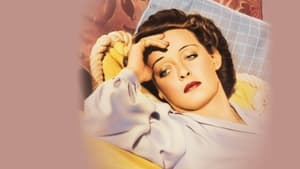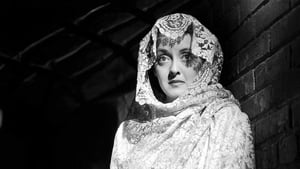Contact: info@alwanfilm.com
Video Sources 0 Views

Synopsis
The Letter 1940 Colorized Review: A Noir Classic with a Complex Female Lead

Introduction
The Letter (1940) stands as one of the greatest examples of film noir, renowned for its atmospheric tension, moral ambiguity, and the powerful performance of Bette Davis. Directed by William Wyler, this adaptation of W. Somerset Maugham’s 1927 play weaves a story of crime, passion, and deceit set against the exotic backdrop of British Malaya. The film not only explores the intricacies of human emotion but also raises complex questions about justice, morality, and the consequences of colonialism. In this review, we will delve into the nuances of The Letter, discussing the significance of its performances, particularly Bette Davis’s, and explore how its place within the noir genre solidifies its standing as a cinematic masterpiece.
Check The Full Colorized Movies List
Check Our Colorized Movies Trailer Channel
Understanding The Letter 1940 Colorized: Director, Cast, and Genre
Director’s Vision
William Wyler, one of Hollywood’s most respected directors, was known for his ability to bring out nuanced performances and create films with deep emotional and psychological resonance. The Letter (1940) is no exception. Wyler’s adaptation of Maugham’s play is a masterclass in tension and suspense, with every frame meticulously crafted to enhance the film’s mood of quiet dread. Wyler’s use of shadow, light, and close-up shots effectively mirrors the emotional turmoil of the characters, drawing the audience into the psychological labyrinth that is central to the film.
Wyler’s direction is also noteworthy for its pacing. The film slowly unfurls its plot, allowing the tension to build gradually. Wyler was known for his perfectionism, often demanding multiple takes from his actors to achieve the exact emotional tone he desired. This attention to detail is evident in The Letter, where every scene pulses with quiet intensity, each interaction laden with meaning and foreboding.
The Iconic Performance of Actors
At the heart of The Letter is Bette Davis’s tour-de-force performance as Leslie Crosbie, a woman who is both victim and perpetrator, sympathetic and cold-blooded. Davis, known for her ability to portray complex and often unlikable characters, delivers one of her finest performances here. From the film’s iconic opening scene, where she shoots a man in cold blood, to her final moments on screen, Davis commands every frame. Her portrayal of Leslie Crosbie is multi-layered, conveying both vulnerability and ruthless determination. It’s a performance that lingers long after the credits roll.
Davis is supported by a strong cast, including Herbert Marshall as her stoic, loving husband, Robert Crosbie, and James Stephenson as Howard Joyce, her conflicted defense attorney. Stephenson, in particular, delivers a nuanced performance as a man caught between his sense of morality and his professional duty. Gale Sondergaard’s chilling portrayal of Mrs. Hammond, the widow of the murdered man, adds another layer of tension to the film, her silent presence a constant reminder of Leslie’s crime.
Exploring the Genre
The Letter (1940) fits squarely within the film noir genre, with its emphasis on moral ambiguity, crime, and a protagonist caught in a web of deception. The film is steeped in the visual and thematic elements that define noir: high-contrast lighting, shadowy cinematography, and a sense of inescapable fate. Wyler’s use of chiaroscuro lighting—sharp contrasts between light and dark—emphasizes the film’s themes of guilt, secrecy, and the duality of human nature. The Letter is not just a courtroom drama or a murder mystery; it’s a psychological study of a woman trapped by her own lies and desires, emblematic of the noir tradition.
Exploring the World of The Letter 1940 Colorized: Plot and Characters
Detailed Synopsis
The Letter (1940) begins with a bang—literally. The film opens on a sultry evening in British Malaya, where Leslie Crosbie (Bette Davis), the wife of a plantation owner, shoots Geoffrey Hammond, a family friend, in what appears to be an act of self-defense. She claims Hammond tried to assault her, and her husband, Robert Crosbie (Herbert Marshall), believes her without question. The case seems straightforward, but as the investigation unfolds, cracks begin to appear in Leslie’s story.
Leslie’s lawyer, Howard Joyce (James Stephenson), is initially confident in her innocence, but he soon discovers a letter written by Leslie to Hammond on the night of the murder—an incriminating piece of evidence that suggests a prior relationship between the two. The letter is in the possession of Hammond’s widow (Gale Sondergaard), a mysterious and menacing figure who seeks vengeance. Joyce, torn between his loyalty to his client and his moral compass, struggles with the decision of whether or not to use the letter in Leslie’s defense.
As the trial approaches, Leslie’s facade begins to crumble, and the truth about her affair with Hammond comes to light. Despite the overwhelming evidence against her, Leslie manages to manipulate those around her to secure her freedom, but at a steep cost. In the film’s haunting conclusion, justice catches up with Leslie in a way that is both unexpected and inevitable, sealing her fate.
Complex Protagonist and Supporting Characters
Leslie Crosbie is one of the most complex characters in film noir history. She is both a tragic figure and a calculating manipulator, capable of deep emotion yet ruthless in her self-preservation. Throughout the film, Leslie walks a tightrope between vulnerability and cold detachment, making her both sympathetic and despicable at different moments. This duality is key to the film’s tension, as the audience is never quite sure whether to root for her or condemn her.
The supporting characters in The Letter also play crucial roles in shaping the narrative. Robert Crosbie, played with quiet dignity by Herbert Marshall, is a loving husband who is blind to his wife’s deceit. His trust in Leslie never wavers, even as the evidence against her mounts. His loyalty and naivety make him a tragic figure, a man who is ultimately betrayed by the person he loves most.
Howard Joyce, Leslie’s lawyer, serves as the film’s moral compass. His internal struggle—whether to act in his client’s best interest or to uphold the law—adds an additional layer of complexity to the story. Joyce’s character is essential in highlighting the film’s exploration of moral gray areas, as he grapples with the ethical implications of defending a woman he knows is guilty.
The Art of Film Noir Cinematography
Visual Storytelling Through Shadows
One of the most striking aspects of The Letter (1940) is its use of light and shadow to convey psychological depth and emotional tension. Cinematographer Tony Gaudio masterfully uses chiaroscuro lighting to enhance the film’s noir atmosphere. Shadows creep into every corner of the frame, symbolizing the secrets and lies that Leslie Crosbie harbors. The interplay of light and darkness reflects the film’s central theme: the fine line between innocence and guilt, truth and deception.
The use of shadows is particularly evident in scenes where Leslie’s guilt is most palpable. As the truth about her relationship with Hammond begins to surface, the lighting becomes more dramatic, casting Leslie in stark contrasts that mirror her emotional unraveling. The film’s cinematography not only serves to heighten the suspense but also acts as a visual metaphor for the characters’ inner struggles.
Themes Explored in The Letter 1940 Colorized
Moral Ambiguity and Guilt
The Letter (1940) is a film that thrives on moral ambiguity. Leslie Crosbie is not a straightforward villain; she is a woman driven by desperation and fear. Her actions, while reprehensible, are understandable in the context of her situation. The film doesn’t offer easy answers or clear moral judgments, leaving the audience to wrestle with questions of guilt, justice, and redemption.
At its core, the film explores the destructive power of lies and the lengths to which people will go to protect themselves. Leslie’s carefully constructed facade begins to crumble as her guilt becomes more apparent, and the film raises the question of whether she is more a victim of circumstance or a cold-blooded murderer. This tension between guilt and innocence is central to the film’s impact.
Colonialism and Cultural Tensions
While The Letter (1940) is primarily a crime drama, it also subtly addresses issues of colonialism and cultural tensions. Set in British Malaya, the film depicts the uneasy coexistence between the British colonizers and the local population. Mrs. Hammond, a native of the region and the widow of Leslie’s victim, serves as a symbol of the colonial tensions that simmer beneath the surface of the narrative.
The power dynamics between the British characters and the local population are reflected in the way Leslie’s crime is handled. As a British woman, Leslie is afforded privileges and protections that a local person in the same situation might not have received. The film, while not overtly political, gestures toward the racial and cultural hierarchies of the time, adding an additional layer of complexity to the story.
Reception and Legacy of The Letter 1940 Colorized
Critical Acclaim and Awards
Upon its release, The Letter (1940) was met with critical acclaim, particularly for Bette Davis’s electrifying performance. Davis received an Academy Award nomination for Best Actress, and the film itself earned seven nominations in total, including Best Picture, Best Director (William Wyler), and Best Cinematography (Tony Gaudio). While the film did not win any Oscars, its nominations are a testament to the strength of its performances, direction, and technical achievements.
Over time, The Letter has come to be regarded as one of the finest examples of film noir and one of the standout films of Bette Davis’s illustrious career. Its exploration of moral ambiguity, combined with its atmospheric cinematography and compelling performances, has ensured its lasting legacy in the annals of cinema history.
Influence on Film Noir and Beyond
The Letter (1940) is a quintessential film noir, and its influence can be seen in many subsequent films within the genre. Its portrayal of a morally complex female protagonist was groundbreaking at the time and paved the way for future noir films to explore similarly nuanced characters. The film’s exploration of guilt, deception, and moral ambiguity has become a hallmark of the genre, influencing filmmakers for decades.
The film also contributed to the ongoing collaboration between Bette Davis and William Wyler, both of whom would continue to leave a significant mark on Hollywood. Their work together in Jezebel (1938) and The Little Foxes (1941) further solidified their reputations as two of the most talented figures in American cinema.
Conclusion
The Letter (1940) is a timeless classic that continues to captivate audiences with its blend of psychological intrigue, moral complexity, and noir aesthetics. Bette Davis’s unforgettable performance as Leslie Crosbie, combined with William Wyler’s masterful direction, ensures the film’s place as one of the finest examples of film noir. Whether viewed as a study in guilt and redemption or as a critique of colonial power dynamics, The Letter remains a powerful and thought-provoking cinematic experience.













